5-21-23
Swiss Movement: Cyril Schäublin’s Unrest
By Diane Sippl
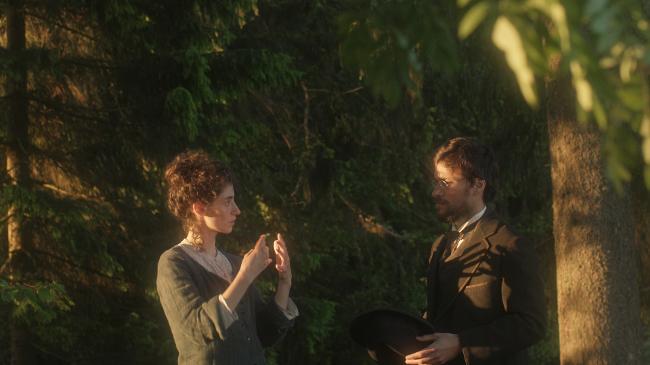
At least two surprises turn up in the narrative of Cyril Schäublin’s supremely eloquent film, Unrest. They complement each other ingeniously, and balance the film’s thesis. The first culminates a nearly five-minute-long pre-credit sequence featuring a foursome of nineteenth-century Russian ladies who are utterly at rest. Donning summer white frocks and lace parasols, they take delight in “appearing” as three of them pose for a photograph. Their leisure-class status allows them to sip champagne in the dappled sunlight over a river bank as they peruse photographs of others, including one of a cousin, Pyotr Kropotkin.
Their gossip of Pyotr reveals their rather astute knowledge of social systems as they report his time in Switzerland in a valley of farmers and watchmakers where he became an anarchist. The ladies take turns chiming in. “It’s like communism but without a government.” “They want to build a federation and to decentralize power. Creating local farms of self-governments without the concept of a nation... Unlike Marx and Engels, who wish to establish a centralized form of power after the revolution.” “Maybe it’s also a question of territory. We imagine a territory as the area of a state or a nation. But for anarchists, it’s just a place that we live in together at any moment.” “Which concept will win—anarchism or nationalism?” “What do you mean by winning?”
Then comes their gossip of a recent encounter with Pyotr, who himself was fixing his gaze on a photo he’d bought in Paris of a clan leader from Papua New Guinea, a woman who cut an English officer’s throat because he tried to kiss her. “She was executed, of course. The English hanged her,” is the report. “Poor, poor Pyotr—he fell in love with a picture of a dead person who he had never even met,” sighs one woman. “Yes, but at least he fell in love,” remarks another.
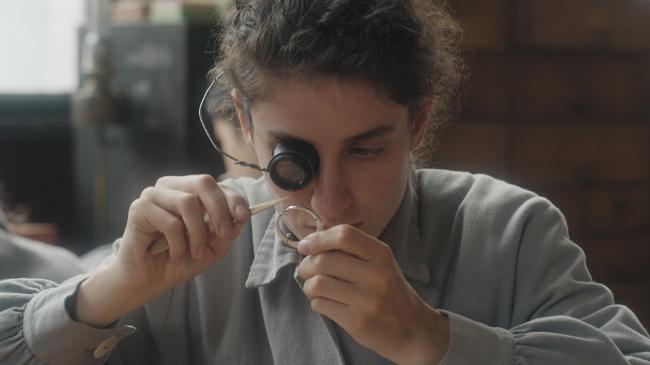
This last remark, fairly forgotten, hangs in the air like a spring mist until a final surprise punctuates the film just as it opens it for interpretation. Then we’re invited to ponder these major themes introduced so early—unrest, representation, and love—and the unexpected ways in which they utterly come together. How other themes—technology, time, and money, for example—dovetail ever so intricately with these is a history lesson that goes down like a newly discovered tonic, since imbibing it is sheer visual and auditory pleasure. Schäublin takes us to the canton of Bern and gives us the tale of Kropotkin in Switzerland, hardly fabricated, based as it is on the real man and his own writings, as quoted in inter-titles before the prologue. Subsequent frames, scene after scene, have never looked lovelier, regardless of (or especially because of) the fact that all is shot on location in the verdant village where the filmmaker’s own grandmother and great-grandmother and great-aunts worked as watchmakers. They truly inspired Schäublin to share their story, just as it’s the inner beauty of their courage and charisma that inspired Kropotkin:
The independence of thought and expression which I found in the Swiss Jura Mountains appealed far more strongly to my feelings; and after staying a few weeks with the watchmakers, my views upon socialism were settled: I was an anarchist.
Pyotr Kropotkin, 1877
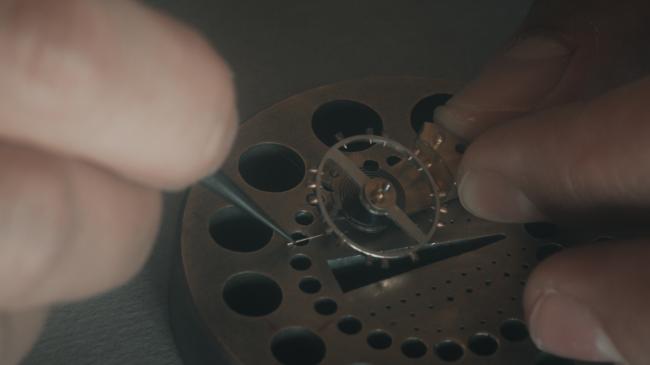
Kropotkin arrives in the Alpine village of Saint-Imier as a geographer striving to make maps—not of the standard demarcations delineated by the nation’s historically conquered territories but of local centers organized by people who share their labor. Already, representation is at stake. The idea is enhanced immediately when a police officer prohibits Kropotkin from crossing a wood-side boundary designated by a watch factory because atmospheric photographs (sans workers) are being taken to promote the company in a printed catalogue. The factory is world-famous for its product but (even then) considers itself in a crisis for losing what it perceives to be its (unsurpassed) share of the global market. Its biggest contracts are for the militaries of various countries.
On the town’s election day, rifles are the prize at the municipal raffle, and at an alternative raffle, it’s photographs, a genuine fascination for passers-by caught by an itinerant photographer/huckster who both shoots portraits for a price and sells photos of others—faraway celebrities, anonymous faces, and executed anarchists—all of which the townsfolk ogle as if they were icons or trade the way children of later generations would swap holy cards or collect baseball cards. Put another way, the photo is a street novelty the way the nickelodeon would be in years to come, a popular amusement. (At the same time, as a new form of representation, it can work locally and around the world as either a tool for organizing or an artifact of surveillance.) As it turns out, two people win photo-portraits, Pyotr Kropotkin and Josephine Gräbli, a young factory worker who produces the “unrest wheel,” the miniscule but vital organ that balances movement at the core of the mechanical watch.
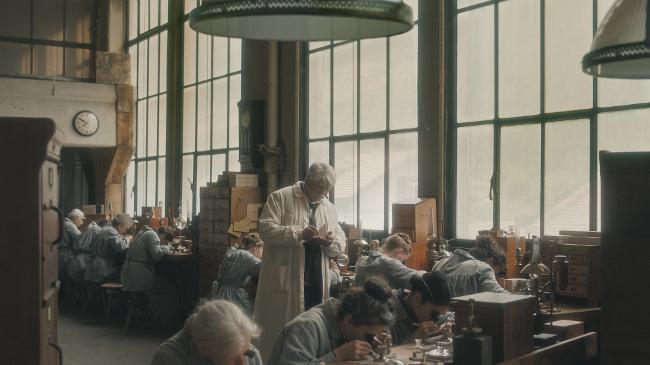
Inside the factory, we see Josephine’s work up-close, the way a supervisor monitors it over her shoulder and clocks her performance (and also the way she and the other workers deliberately slow it down so as not to be treated as if they were machines). They are paid—and can be fired—according to their work pace. They can also be fired as anarchists. On the contrary, those who are fined for not paying their taxes are allowed to take their factory tools with them to do their work in jail. Time—even jail time—is money.
What’s astounding is that right in the midst of their labor, the watchmakers organize endlessly, to decide how to voice their needs at the coming election and how to raise funds for Baltimore rail workers on strike. (Saint-Imier was then the center of the international anarchists’ movement every bit as much as it was the center of the world’s watchmaking). Also important is that on the factory floor (as opposed to in the Swiss government elections), women not only vote, they initiate and advocate. They also vote in the local pub, where the bartender defies police restraints on anarchists who don’t pay their taxes and serves them (“It’s on me”) all the while he takes count of how many want Kropotkin’s new anarchist map to replace the traditional map above the bar, which it immediately does.
Suave defiance and ceaseless mutual aid are in evidence throughout, down to the local custom of lighting another’s cigarette or providing the match and inevitably ending the gesture with the phrase, “You can keep the box.” The ubiquitous “lighting up” can be taken as unrest itself, sparking the anarchists’ revolution, the camaraderie and solidarity of igniting and passing the flame.
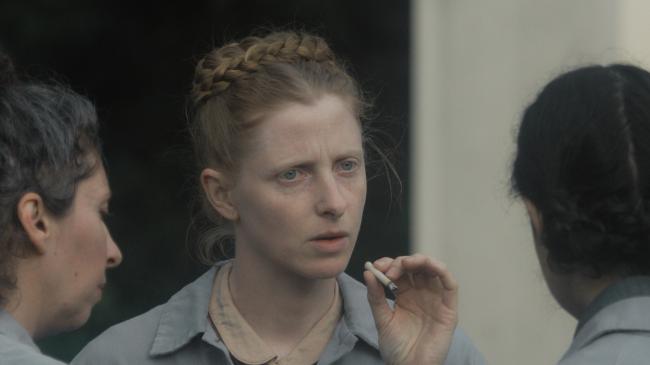
In the 1870s, the height of the Industrial Revolution, new technology calls for increasing practices of measurement—of distance, of the time it takes to walk a distance, of the money it takes to pay for that time to walk: again, time is money, the rule of the era. The ever-improved telegraph system can bridge that distance internationally, increasing the rapidity of orders, sales, and accounting. What happens when the telegraph fails? What’s worse is what happens when it succeeds, and messages like Kropotkin’s to countries the world over are overheard or intercepted. Newly executed anarchist leaders become photographs to be idolized; dead to the world, they are treasured as icons. Representation and communication have always been double-faced tools.
Likewise, with the clock. How to measure time? In the quaint and tiny town of Saint-Imier there are four standards for time: church time, railway time, municipal time (updated by telegraph time), and factory time (eight minutes ahead of municipal time). Ironically, in this watch-making capital of the world, officials are obsessively re-setting the town’s clocks, as if they didn’t stop to think (or know, and don’t care) that the whole concept of time is being arbitrarily based on industrialized labor so as to account for monetary value.
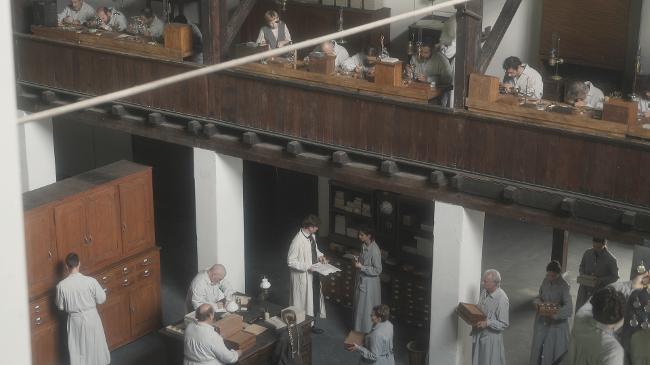
Both the music and the cinematography of the film are in concert with this underlying current of Unrest. The soundtrack comes directly from nature and industry, the forest and the factory, the murmur of the watermill. The only composed music arrives exquisitely in two choral recitals, one by the men of the town on election day singing the “Swiss National Anthem” to a traditional tune, and one by women singing a critique of it, “The Worker Has No Fatherland,” in an appropriately de-constructed style, on the same day. Throughout Unrest, the camera defiantly presents the frame in compositions that de-center the characters; conversations might transpire in the distance (even unseen) or in a corner of a wide shot with plenty of daily life passing by on its normal course. In general, the town’s real inhabitants make up the cast of players, a broad ensemble. Close-ups are at their best in gloriously lit and textured machinery in motion, with all the graphic tension and intrigue Eisenstein would have sketched in his notebook for Eduard Tisse to capture on film.
Yet there is also the motion of nature—not the “Swiss clockwork” of precision and accuracy, but the organic sway of the leaves of trees, creating their own light and shadow, where a stop watch dangles from forest foliage like a wilted flower outside a natural haven of exchange, one unseen and unmeasurable because it’s off-camera, anarchic because it springs from spontaneous time—the balance wheel at the heart of the human clock. It can’t be bought and it won’t be sold. A lapse in technology, in representation, its story remains untold, but it is history, nonetheless.
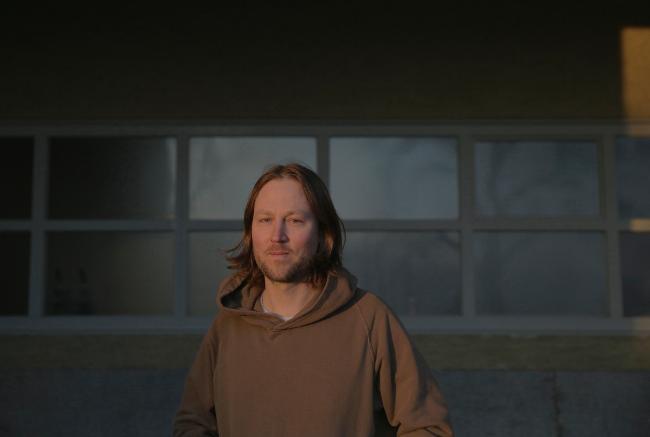
Unrest
Producers: Linda Vogel, Michela Pini; Director: Cyril Schäublin; Screenplay: Cyril Schäublin; Cinematography: Sylvan Hillmann; Editing: Cyril Schäublin; Sound: Miguel Cabral Moraes; Music: Li Tavor; Production Design: Sara B. Weingart; Costumes: Linda Harper
Cast: Clara Gostynski, Alexei Evstratov, Monika Stalder, Hélio Thiémard, Alice-Marie Humbert, Li Tavor, Valentin Merz, Laurence Bretignier, Laurent Ferrero, Mayo Irion, Daniel Stähli.
93 min., Color. In Swiss-German, French, and Russian with English subtitles